Explore this article:
A 30-to-40 Minutes Beginner Swim Workout ⋅ Lap-Swimming Etiquette ⋅ Why Pool Running?
When she first tried swimming 13 years ago, runner Josephine Piccinic had her doubts. She’d turned to the pool to help her recover from injuries she sustained after being hit by a car while on a training run, but she didn’t like how awkward she felt in the water. Her breathing was off. Her moves felt klutzy. “I must have looked like one of the videos of how not to do something,” she recalls. “I didn’t think swimming would work for me.”
But Piccinic, 38, a P.E. teacher and high school track coach in New York City, found that swimming not only helped her recover, it had some surprising fringe fitness benefits. In fact, she credits her swimming regimen with helping her set a personal best of 2:55:31 at the 1999 Chicago Marathon, just shy of the 2000 Olympic Trials qualifying time of 2:48.
Today, Piccinic swims two or three times a week, and her opinion of pool workouts has transformed completely over the years: “I wish I’d started swimming a whole lot sooner,” she says.
The Perfect Cross-Trainer
The road to optimal fitness is not a single lane — or single activity — experience. Athletic experts agree that even if all your athletic ambitions are tied to a single sport, cross-training (doing a variety of activities that work different parts of the body in different ways) is your best bet for achieving peak form and peak results. And because it’s a no-impact, full-body exercise that boosts your cardio capacity without beating up your body, swimming is an ideal complement to almost any activity.
“Swimming allows the body to stretch out and elongate, whereas in other sports, we’re shortening the muscles and collapsing the skeletal system.”
“Swimming allows the body to stretch out and elongate, whereas in other sports, we’re shortening the muscles and collapsing the skeletal system,” says Steve Tarpinian, swim coach and author of The Essential Swimmer. Pair swimming with running, cycling, weight training, soccer or other field sports, and the result will be improved fitness and a stronger, more balanced, less-injury-prone physique.
“Cardiowise, swimming works miracles,” says Dror Vaknin, 40, assistant cross-country coach for the University of Tampa and elite masters runner. Swimming is also one of the most effective exercises for active recovery, helping heal injuries or relieve the stresses inflicted by a tough workout on dry land. Water pressure forces the blood deeper into the muscles, helping them recover, explains Tarpinian.
But don’t think swimming’s joint-friendly ways make it a wimpy workout for muscles. Water resistance provides enough oomph to strengthen your arms, shoulders, back, legs and core — especially your core. (See “A Strength-Building Water Workout“.) “In swimming, the power comes from the arms and hips, and what connects those two is your core. If you swim properly, you’re strengthening the core,” says triathlon coach Barb Lindquist, a former U.S. National Swim team member and a 2004 Olympic triathlete. But swimming properly is the key.
Form Matters
To maximize the cross-training benefits of swimming, you can’t just jump in the water and flop about. Taking the time and care to develop good technique will allow you to enjoy far better cardio results by empowering you to swim at a higher intensity for a longer time. Using good form will also promote muscle balance by assuring that muscles are worked more evenly.
Beginners typically struggle with sinking legs, poor rotation and short strokes. To reduce drag, keep your body properly aligned (head, hips and feet in line and high in the water), roll your whole body from side to side along a lengthwise axis with every stroke and elongate your stroke. Good rotation also helps you breathe: If you’re rolling enough to the side, you won’t need to lift your head (or crank your neck) as much to inhale. Also, make sure to exhale completely with your face in the water before rolling back up for another breath. (For more on technique, see “So, You Want to Be a Swimmer”.)
Perfect your form by working with a swim coach or by joining a coach-led training group. You’ll improve your freestyle technique by performing drills, which isolate specific parts of your stroke. Side-kicking drills, stroke-counting drills (to practice going farther with fewer strokes) and those that focus on arm position and follow-through all pinpoint common problem areas for beginners. Once you’re on top of your swimming game, you can move on to intervals.
Advantages of Interval Training
Looking for the best, most efficient way to boost your cardio and burn more calories while keeping boredom and burnout at bay? Forget the idea of putting in maximum laps, and start swimming intervals instead, says Joel Stager, PhD, director of Indiana University’s Counsilman Center for the Science of Swimming.
With interval training, you can break up the distance into small chunks of varying intensity, with rest between. It’s based on the “overload” principle of training: Stress your body in multiple short, controlled bursts, and it adapts by growing stronger.
The example below is a 30-to-40-minute starter workout designed for someone who’s been training regularly in another sport. Modify it to suit your fitness level — or find other workouts, drills and guidelines for creating your own interval sets in books such as Fitness Swimming by Emmett W. Hines and The Fit Swimmer: 120 Workouts and Training Tips by Marianne Brems, or at www.swimmingworldmagazine.com. Most coach-led training groups also serve up new workouts every session. (Find one in your area on the U.S. Masters Swimming Web site, www.usms.org.)
30-to-40-Minute Beginner Swim Workout
- Warm-Up: 100 m (always begin and end with five to 10 minutes of easy swimming)
- Drills: 3 X 50 m drills (i.e., perform a different drill every 50 meters)
- Main Set:
-
- 4 X 50 m, :30 rest in between, strong pace (about a level 6 on a scale of 1 to 10)
- 2 X 100 m, :30 rest, moderate pace (level 4)
- 4 X 25 m sprints, :30 rest, very strong effort (level 9 to 10, but not so fast you can’t finish)
- Cool-down: 100 m (don’t skip it, especially after finishing a main set with sprints)
Deciphering the lingo:
- 4 X 50 m, :30 rest means that you swim 50 meters four times and rest for 30 seconds after each. Most pools are 25 meters (or yards) long, so one lap (there and back) is 50.
- Olympic pools are twice as long: 50 meters one way. Varying the interval distance and intensity not only adds variety, but also works your body’s different energy systems.
- Fast to all-out-effort intervals of 25 and 50 meters (75 or even 100 meters for fast swimmers) improves your anaerobic capacity, the oxygen-free system that quickly provides powerful bursts of energy for efforts of less than three minutes.
- To build aerobic endurance — when your body uses oxygen to produce fuel — focus on intervals of 100, 200 and 300 meters, with efforts ranging from moderate to strong.
- As your fitness improves, you can try longer intervals. You’ll rarely exceed 500 meters unless you’re training for a race-specific goal such as an Olympic-distance triathlon (which includes a 1,500-meter swim leg) or half-Ironman triathlon (which includes a 1.2-mile swim, about 1,900 meters).
Since it’s a challenge to check a heart-rate monitor on an arm in constant motion, gauge your intensity by perceived effort on a scale from 1 to 10. Level 1 is at rest and 10 an all-out effort. Eventually, you may want to start measuring your intensity and progress by tracking your time on the pace clock. It’s the best way, but does take some practice. Most books on swimming discuss interval timing and using the pace clock. You can also learn how to do it by joining a swim group.
As your fitness improves, challenge yourself by lengthening the interval distance, increasing the intensity or reducing the rest time. Two to three times a week of 30-to-45-minute sessions should yield cross-training benefits without hurting your performance in your primary sport.
If you’re looking to mix up your fitness routine, swimming may be the perfect cross-training activity for you — a nonimpact sport that boosts your fitness, helps you build a more balanced body and adds variety to your workouts. Lindquist, though, offers what could be the best reason for taking the plunge into new waters: “What keeps us young is always learning and challenging ourselves with something new.’’
Lap-Swimming Etiquette
Don’t let a crowded pool keep you from regular workouts. Learn the rules of lane sharing:
- Find your pace. Faster swimmers tend to take the center lanes. Find a lane with people swimming your speed.
- Ask first. Before jumping into someone’s lane, ask to share it. Then wait for the person to resume and get to the other end so you’ll swim in opposite directions, not side-by-side.
- Swim in circles. If more than one swimmer is in the lane, ask if they’ll “circle swim” (swimming clockwise in a circle). Allow enough room in front and behind you to avoid crowding.
- Rest on the wall. On breaks between intervals stay close to the wall and out of the way so others can swim through. Never stop in the middle of the lane.
- Pass (and be passed) politely. Tap on the toes of the person in front you to tell them you’re about to pass. Wait until he or she gets to the wall and yields before swimming through. If you get tapped, reciprocate.
- Socialize on dry land. Don’t waste a lane chatting up your friends
Overcoming 3 Fears of Swimming
Hate to swim? Here’s how to cope with three common fears.
Fear: Putting your face in the water
Suggestions: Find a quality pair of goggles that fit properly — you should feel a slight suction, but not tightness — and provide clear underwater vision. Also, work on developing good side-to-side body rotation so you roll up far enough over the waterline to inhale comfortably, and exhale completely into the water when your face turns back. Relax and breathe smoothly. Avoid short, shallow breaths.
Fear: Embarrassment
Suggestions: Some fear they’ll spend years flailing about in the water before they’re able to tick off a few good laps. It’s especially difficult for long-time athletes to “check the ego at the door” and go back to being “just” a beginner, says coach and 2004 U.S. Olympic triathlete Barb Lindquist. OK, so you won’t look anything like Michael Phelps at first splash. Just stick with it and keep practicing your form. Lindquist says it won’t take long before you’ll be cruising down the lanes with confidence, happy to be mastering a new sport.
Fear: Green hair
Suggestions: Wearing a swim cap, coating your hair with conditioner before swimming and rinsing off right after swimming helps prevent the dreaded greenish hue. Be sure to remove all chlorine traces from skin, too.
Why Pool Running?
U.S. women’s rugby team member Phaidra Knight, 34, says what helps keep her at the top of her game is running three times a week — in the pool. Knight has been pool running since May 2006, when she was recovering from a broken foot. Her water-running workouts — tethered to a ladder in the deep end and supported by a flotation belt — got her healthy enough to compete in the World Cup three months later, where she was recognized as one of the top 15 players in the world.
“I was fitter than I’d ever been in my whole career. It was all due to pool running,” says Knight. Athletes, coaches and doctors praise pool running as one of the best ways to recover from injury and as a superior cross-training activity to increase strength and cardiovascular fitness.
Water Workouts by Steve Tarpinian and Brian J. Awbrey, MD describes several ways besides swimming laps to get fit and build strength in the pool. For more, visit www.aquajogger.com.
This article has been updated. It was originally published in the November 2008 issue of Experience Life.
Are you passionate about swimming and aqua fitness? Take your water workouts to the next level by discovering a variety of exciting aquatic exercise ideas here.
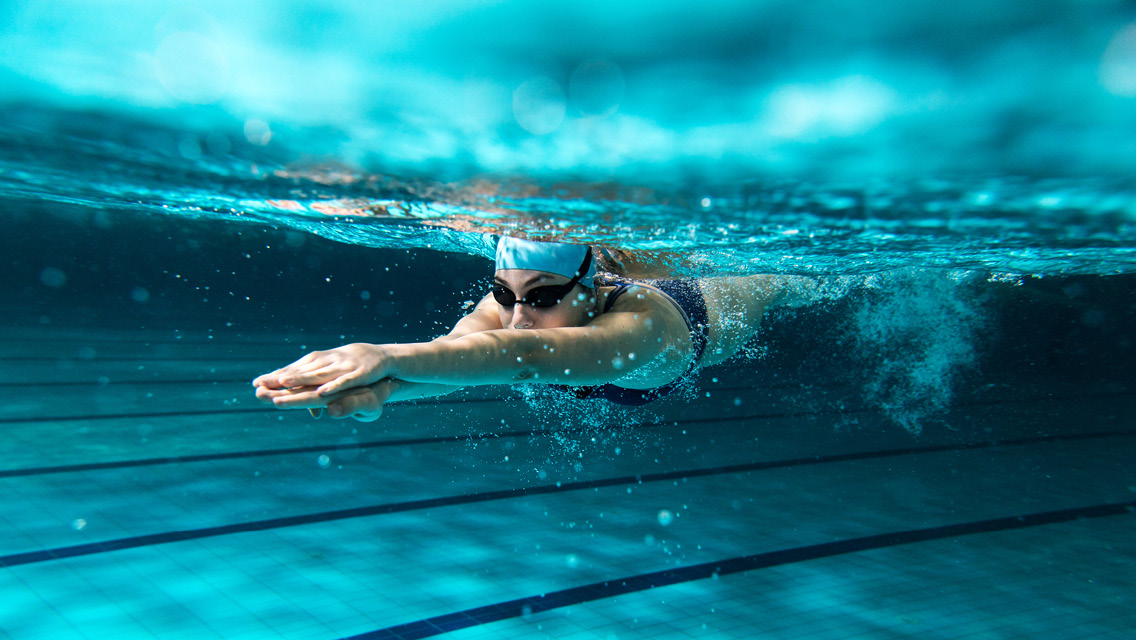
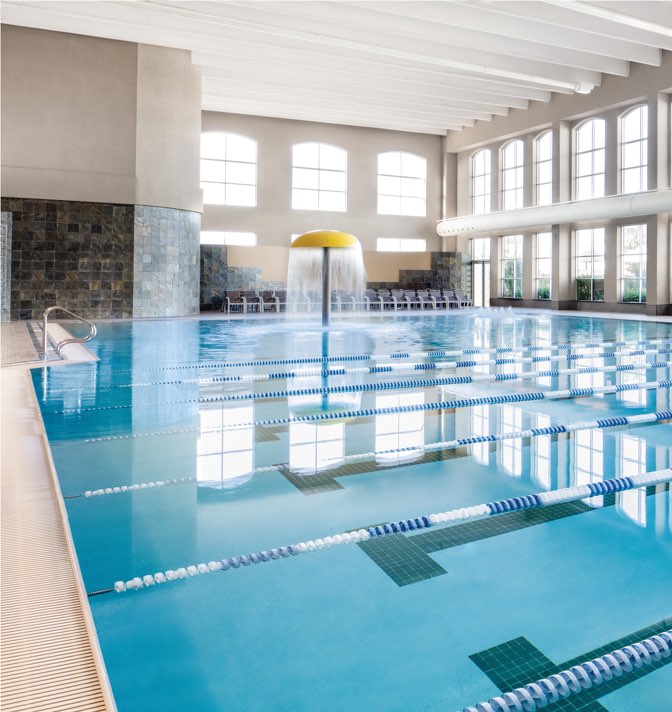
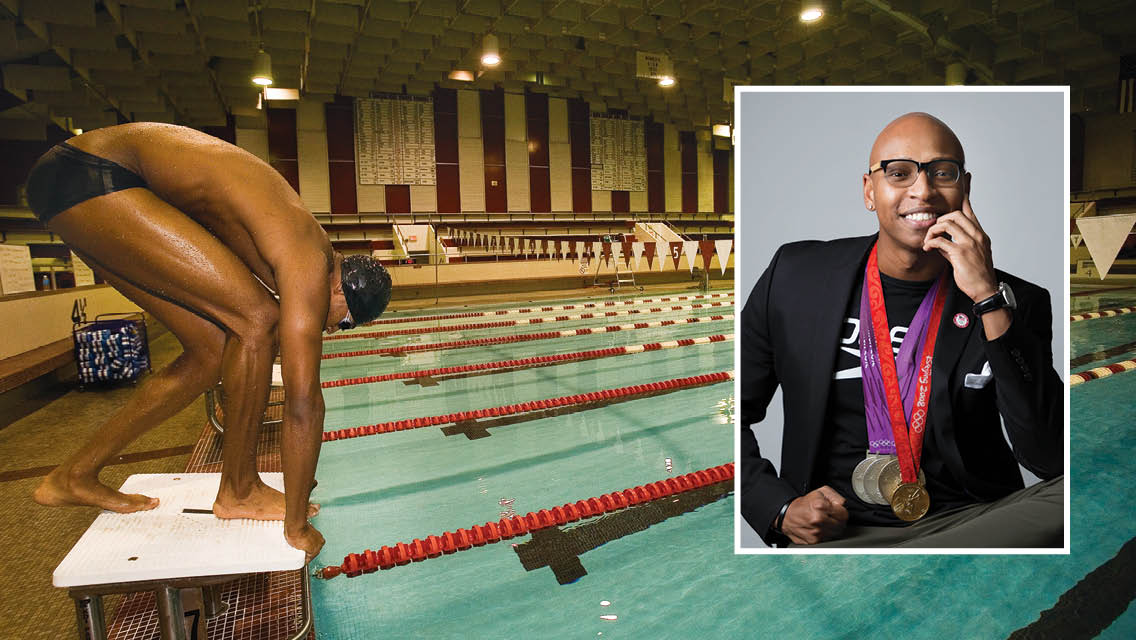
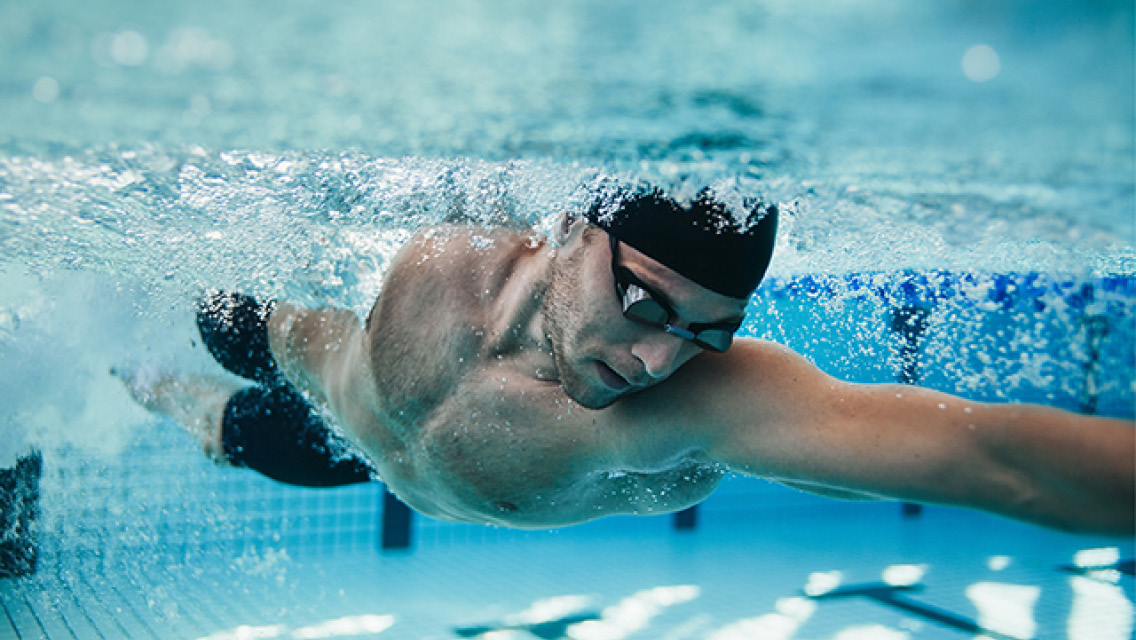
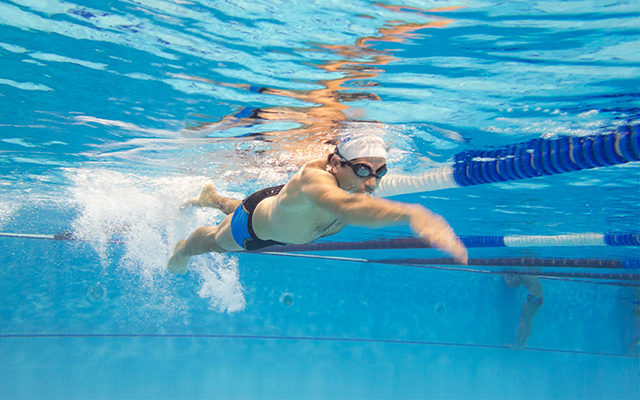
This Post Has 0 Comments